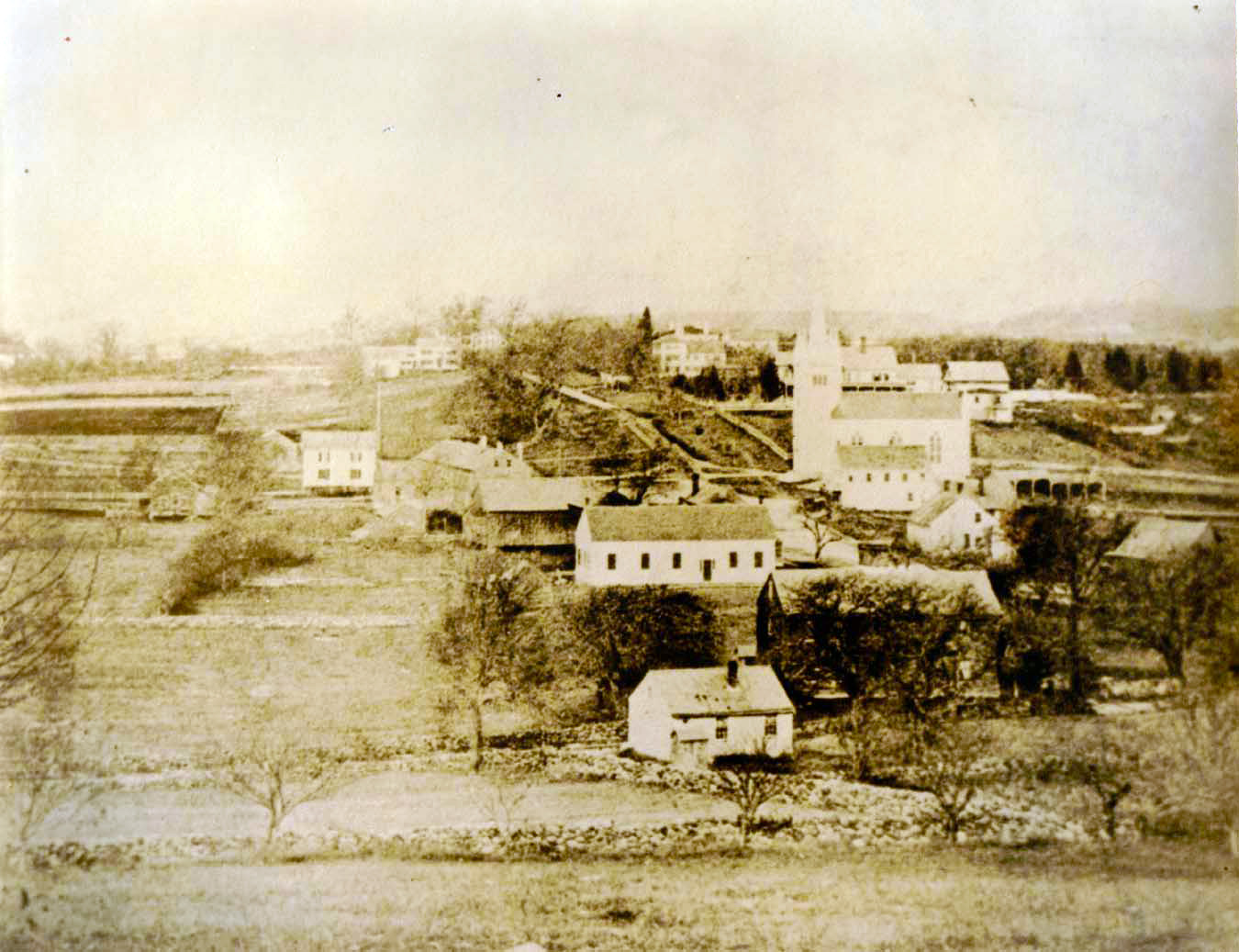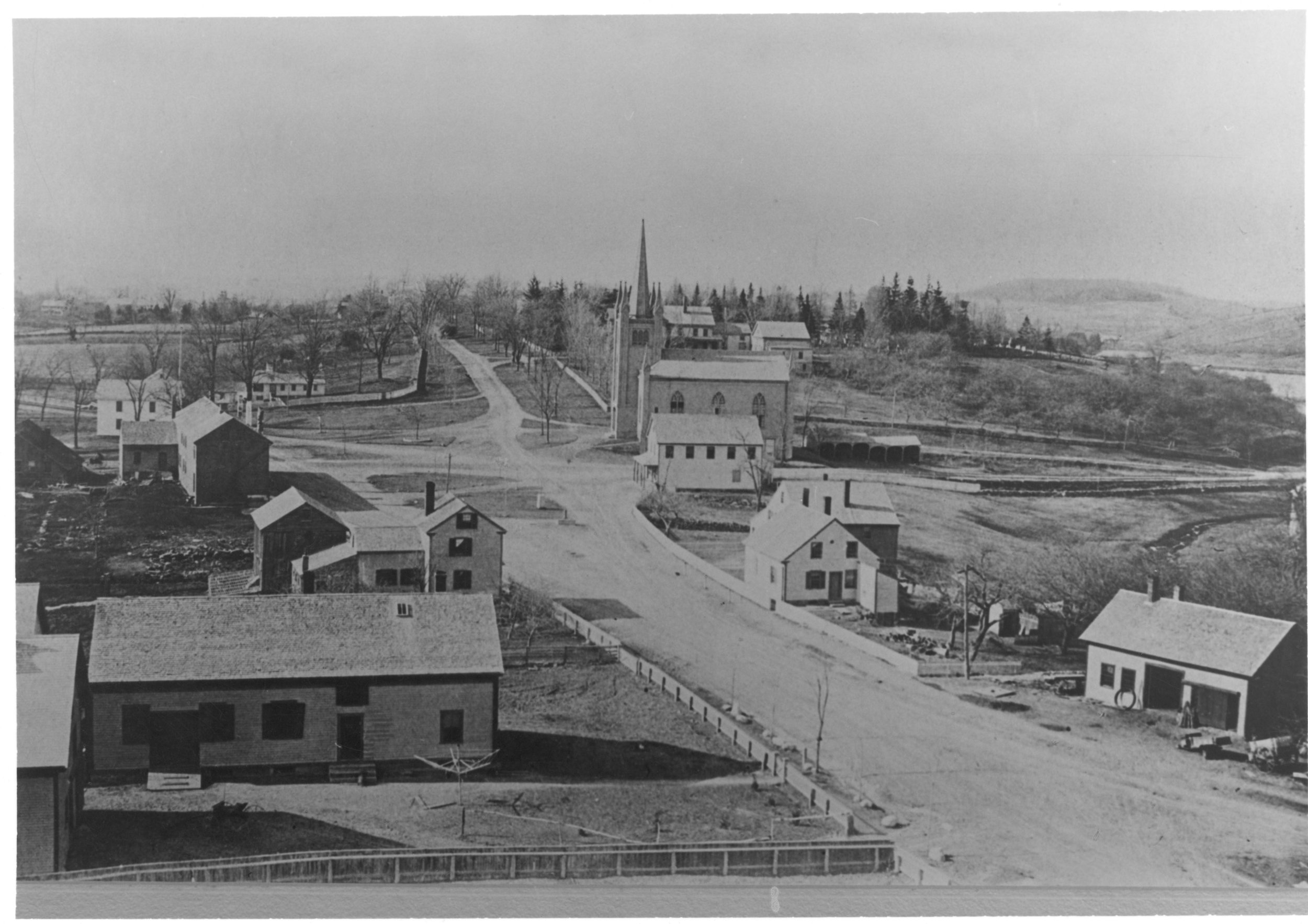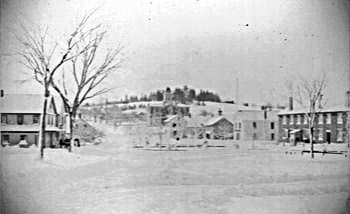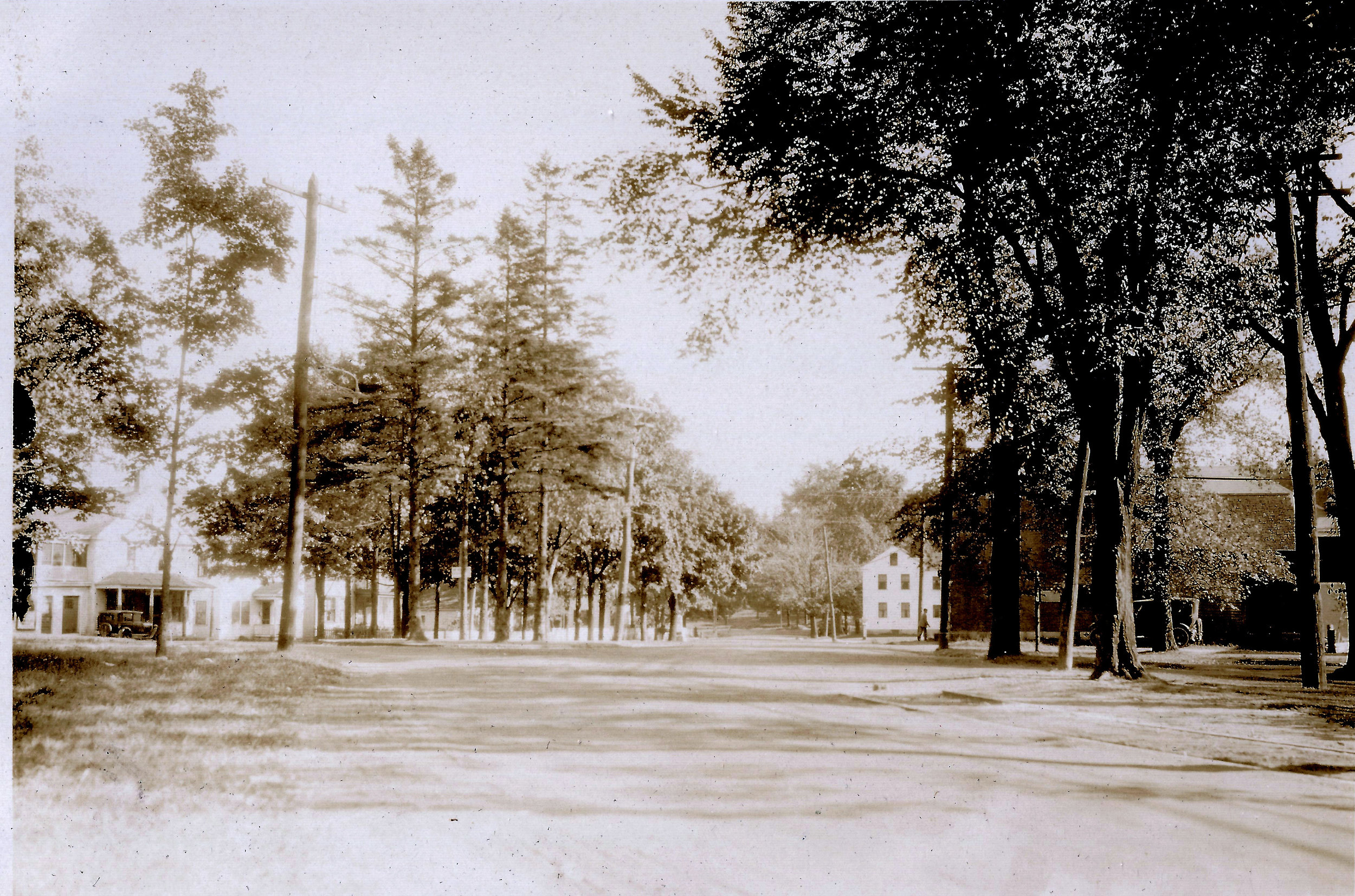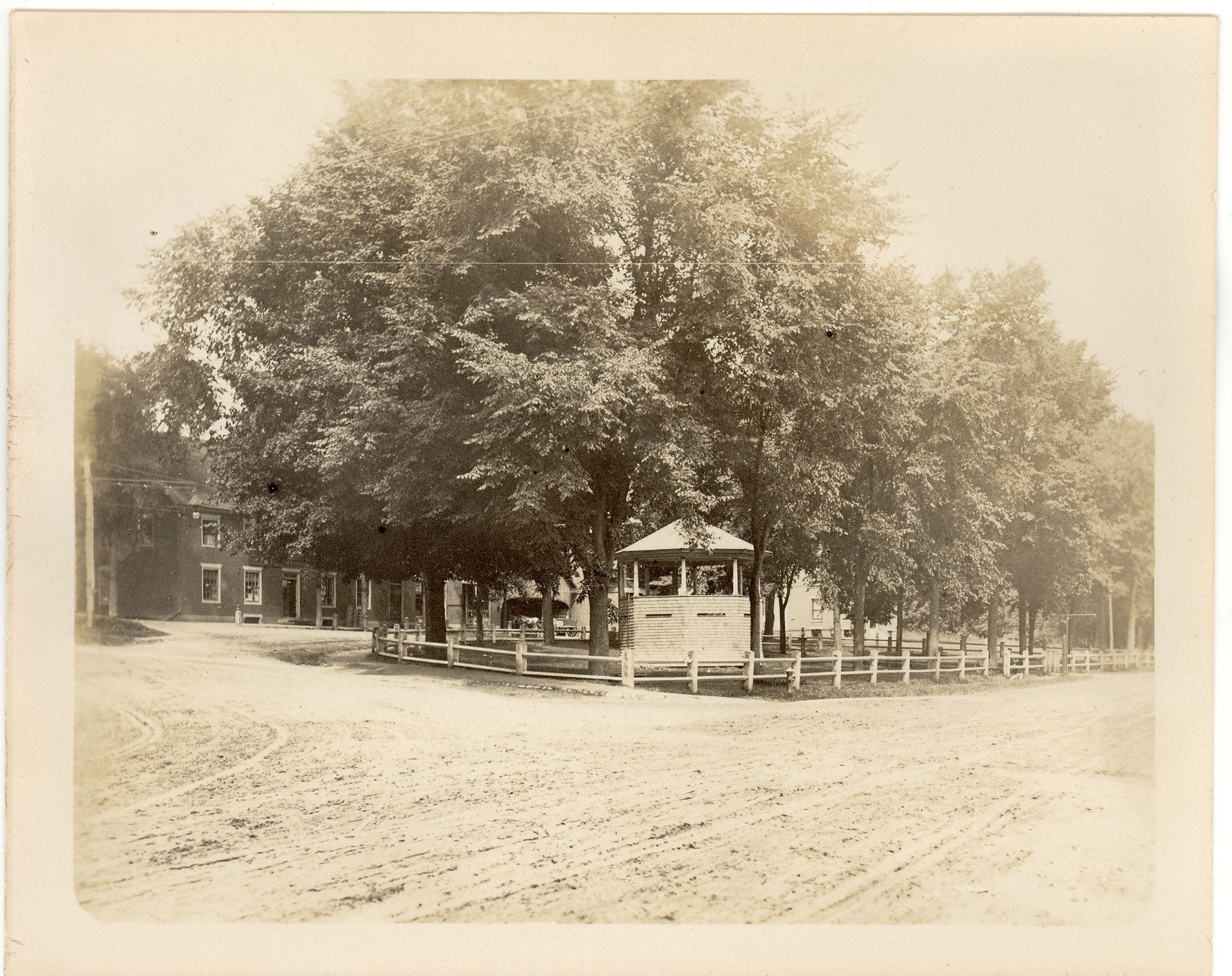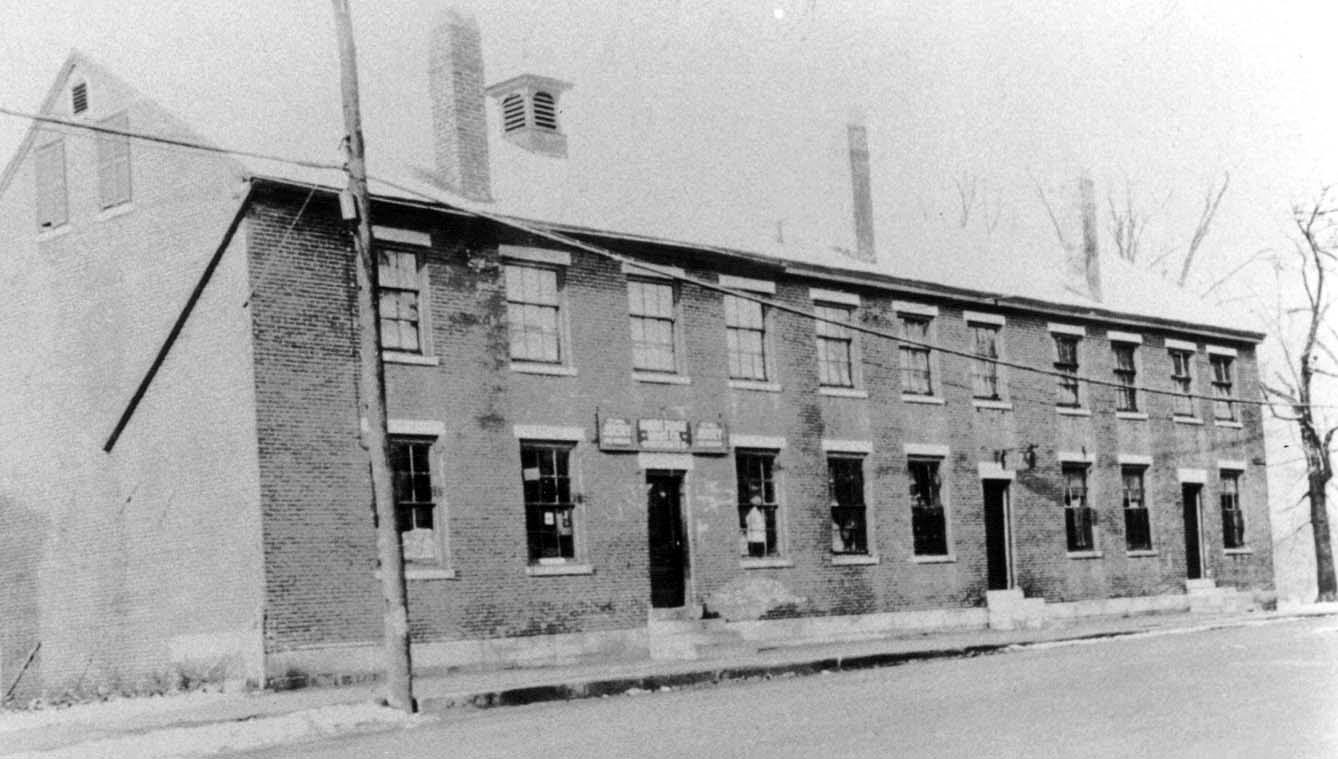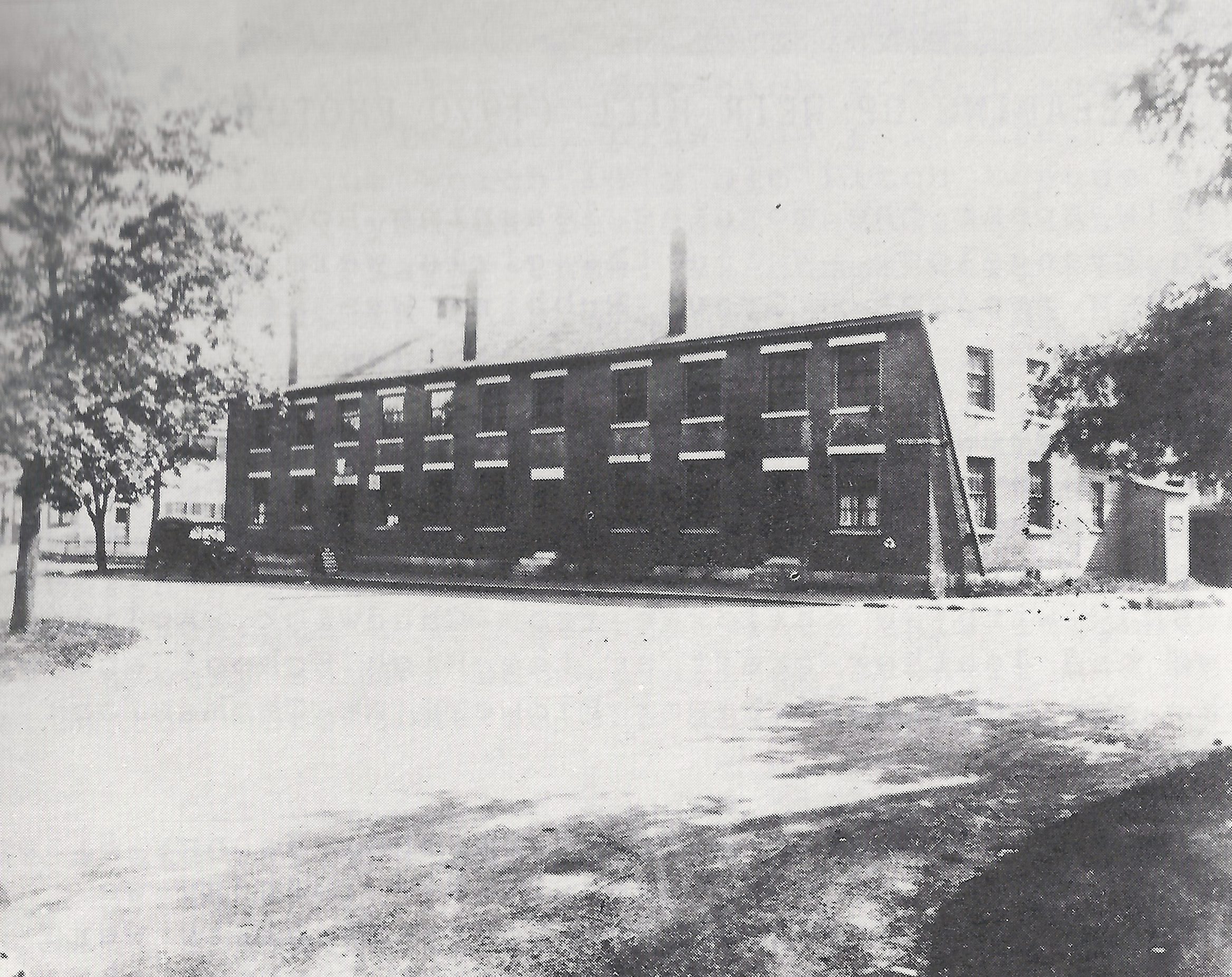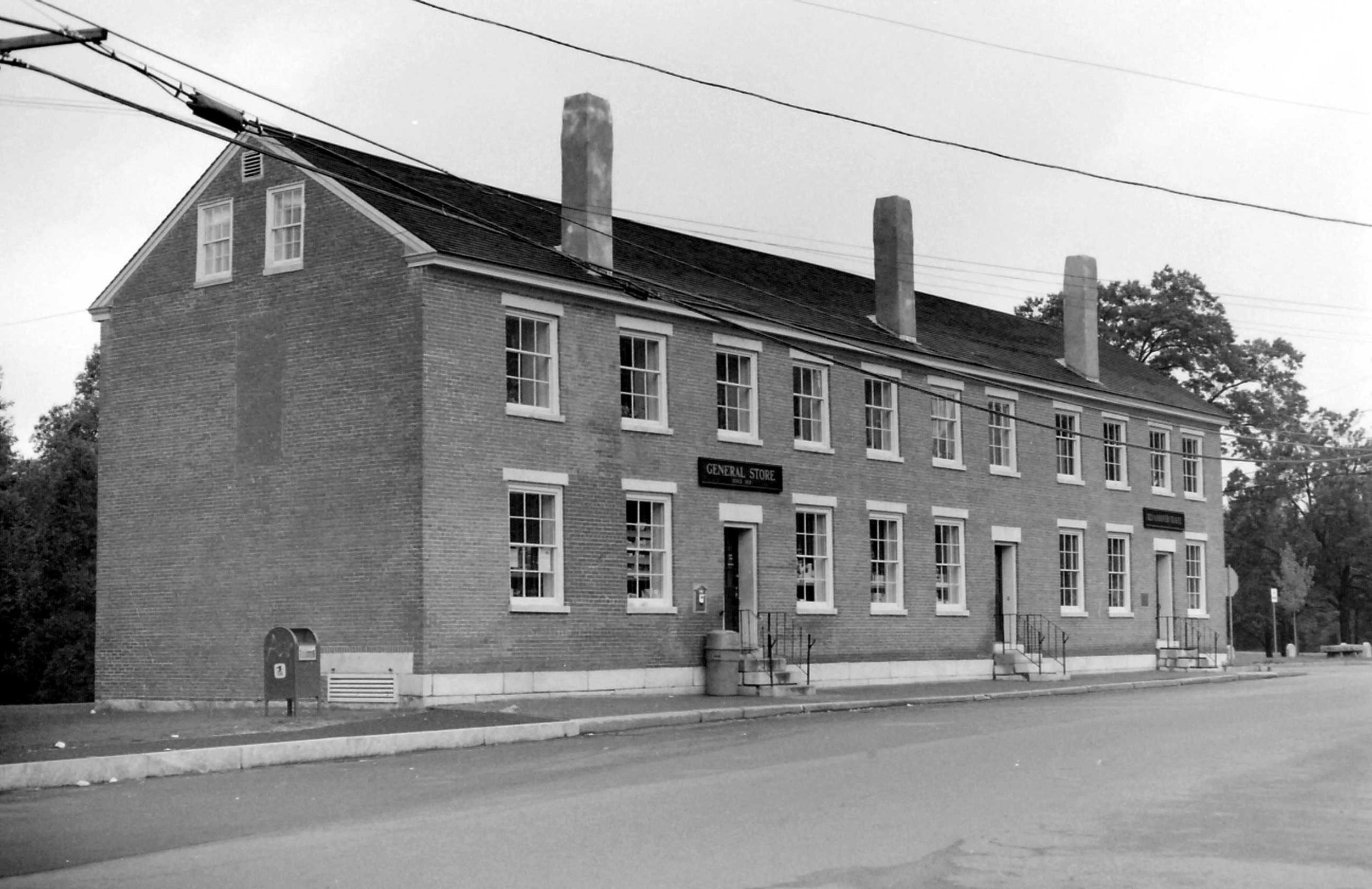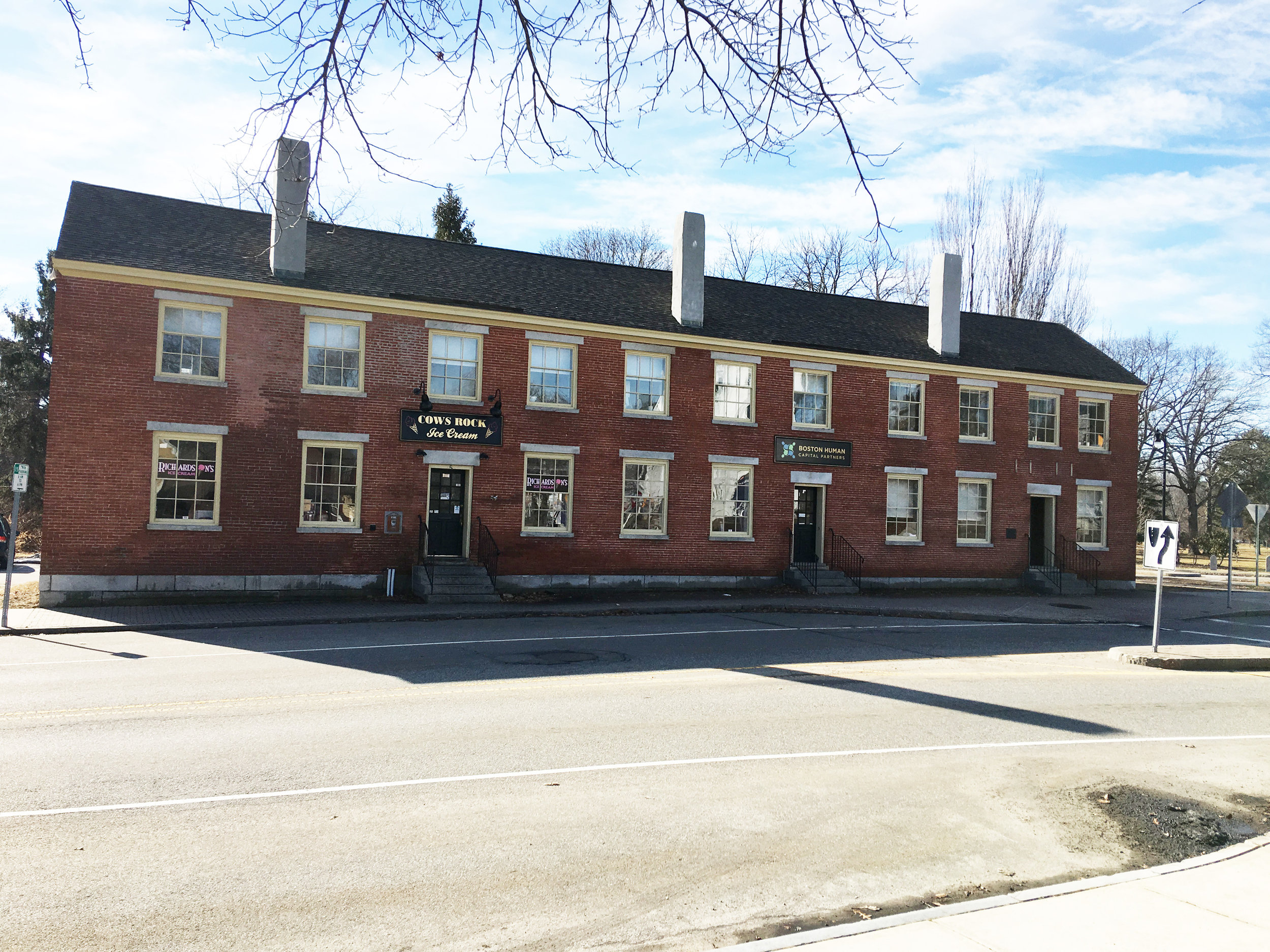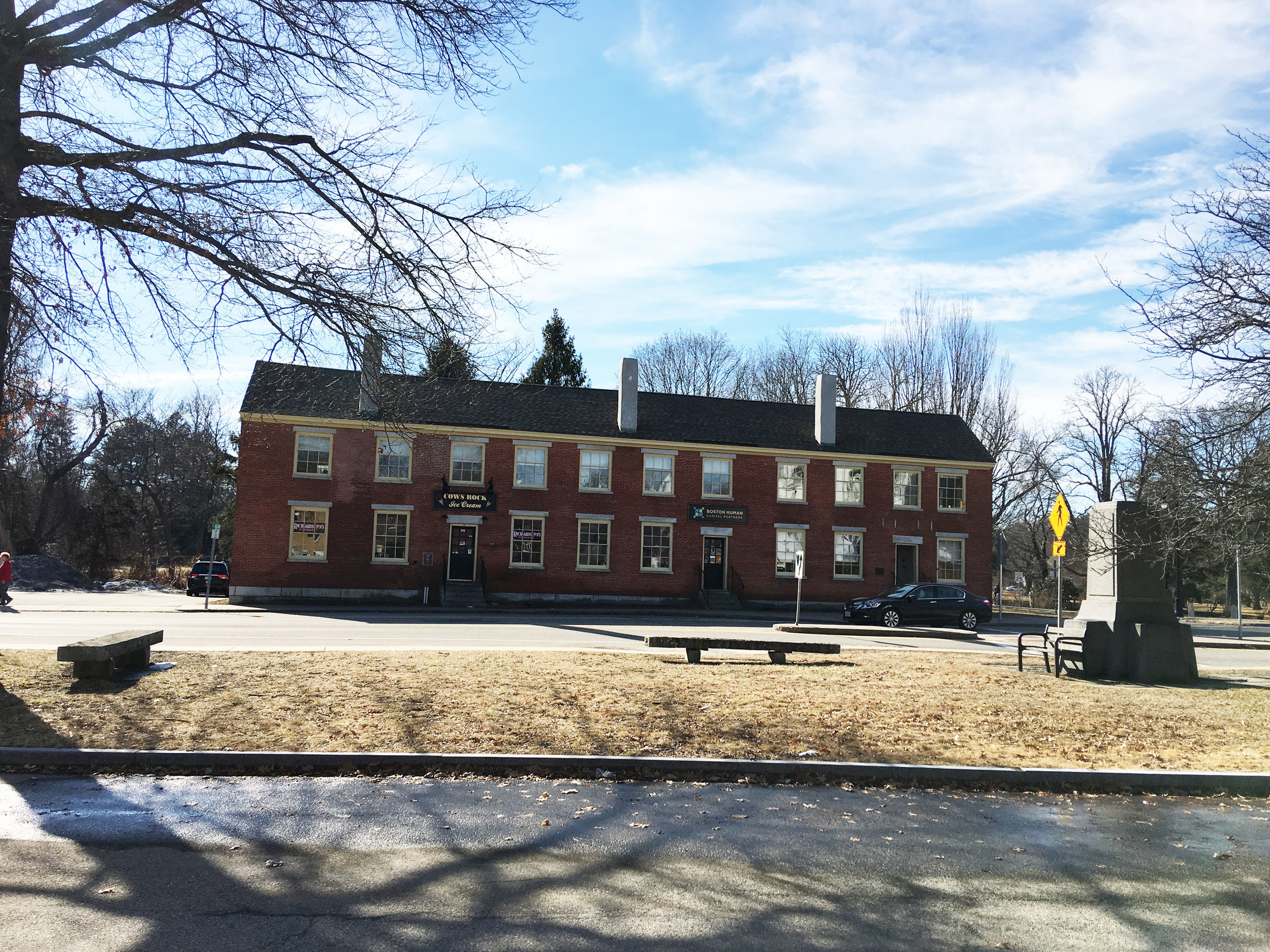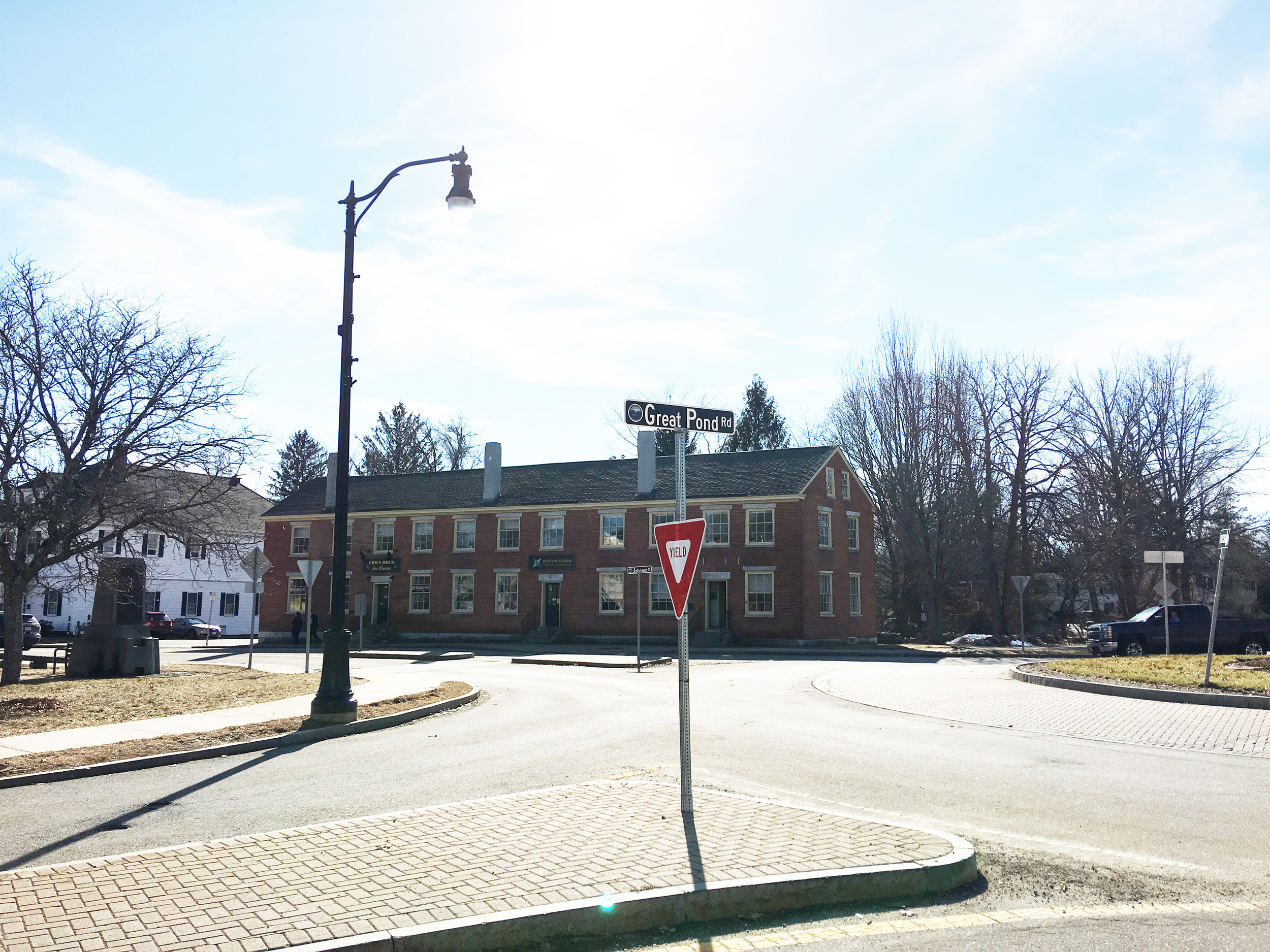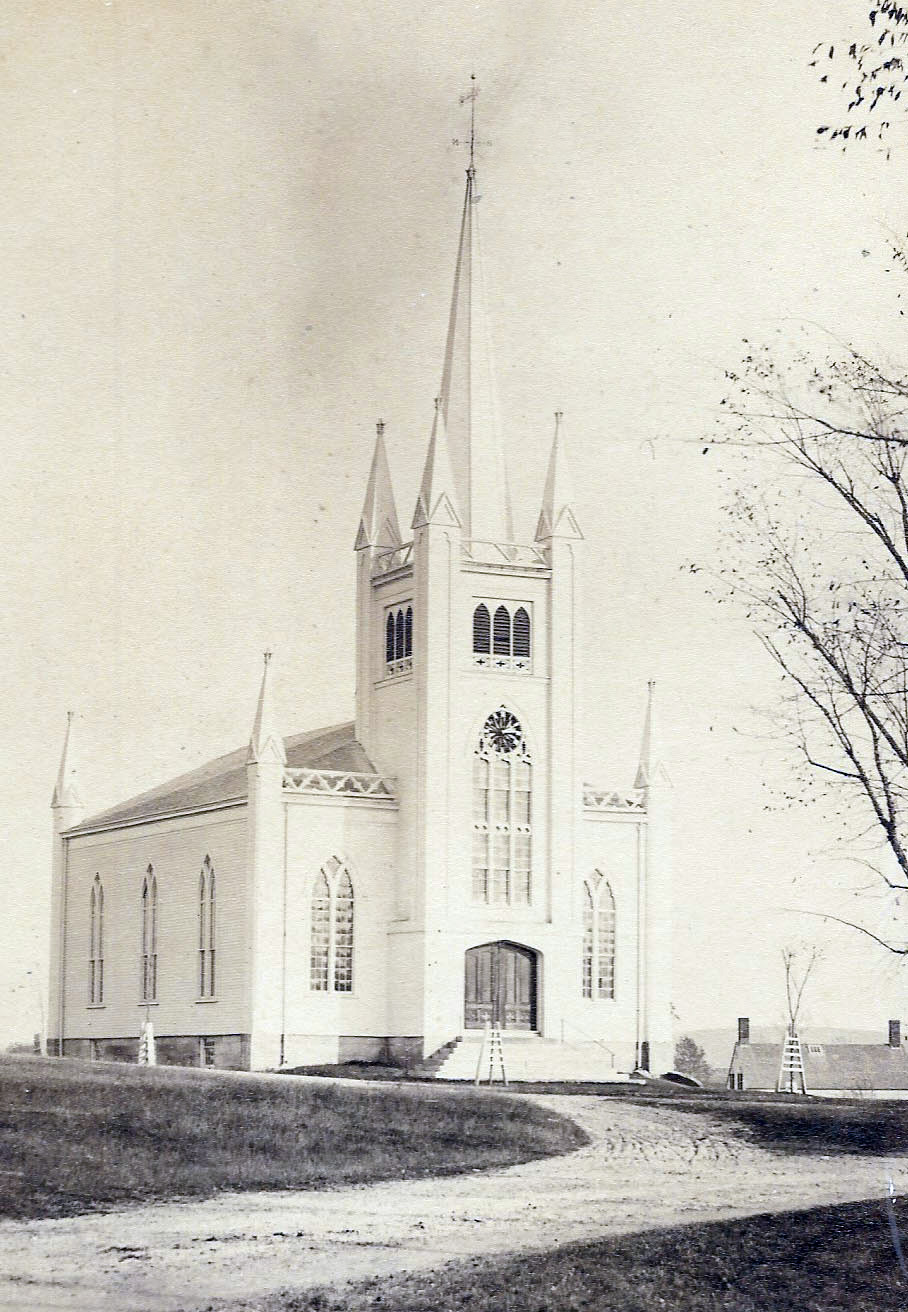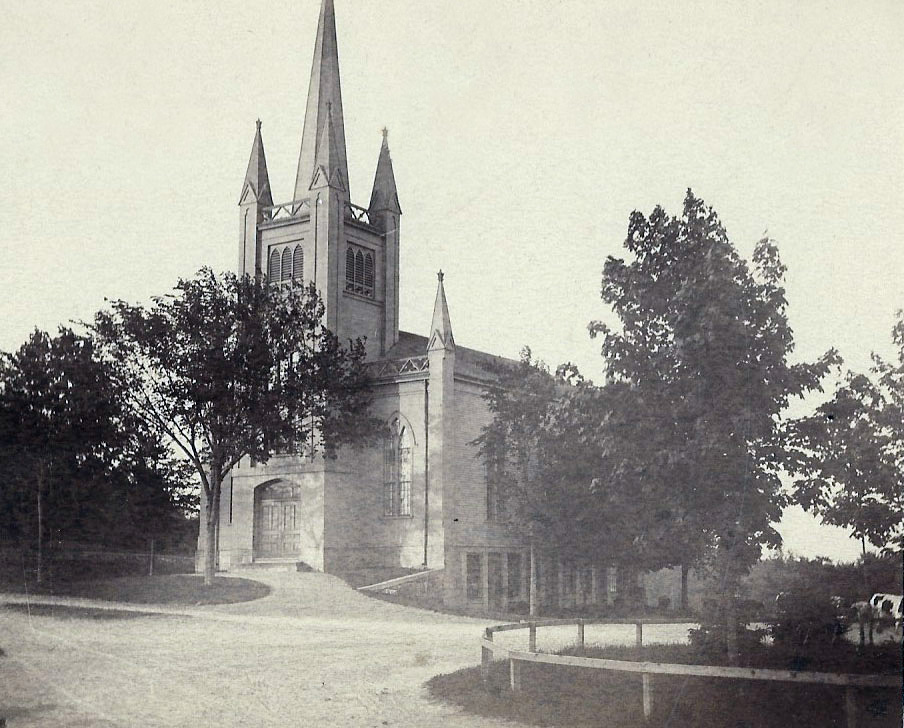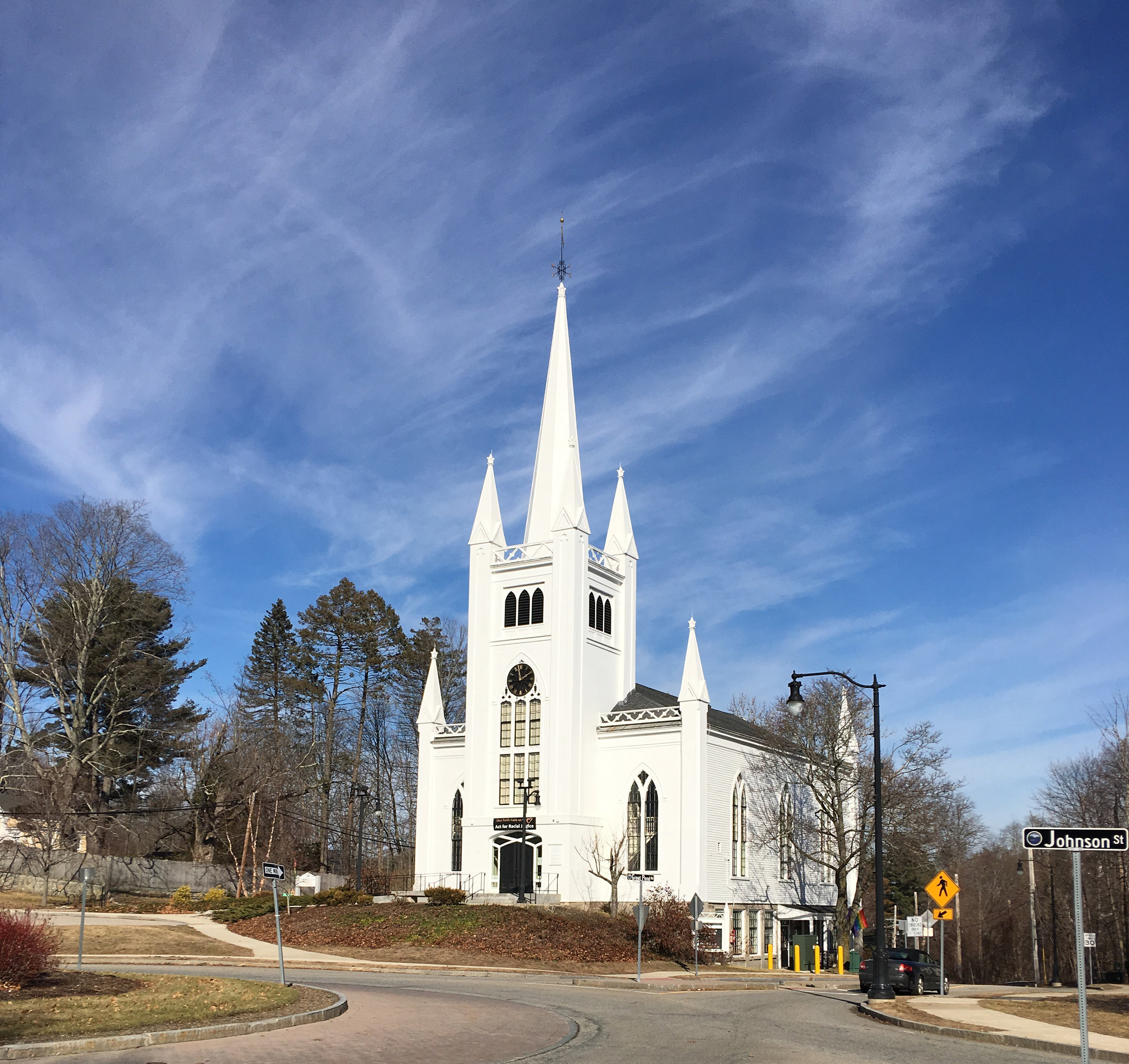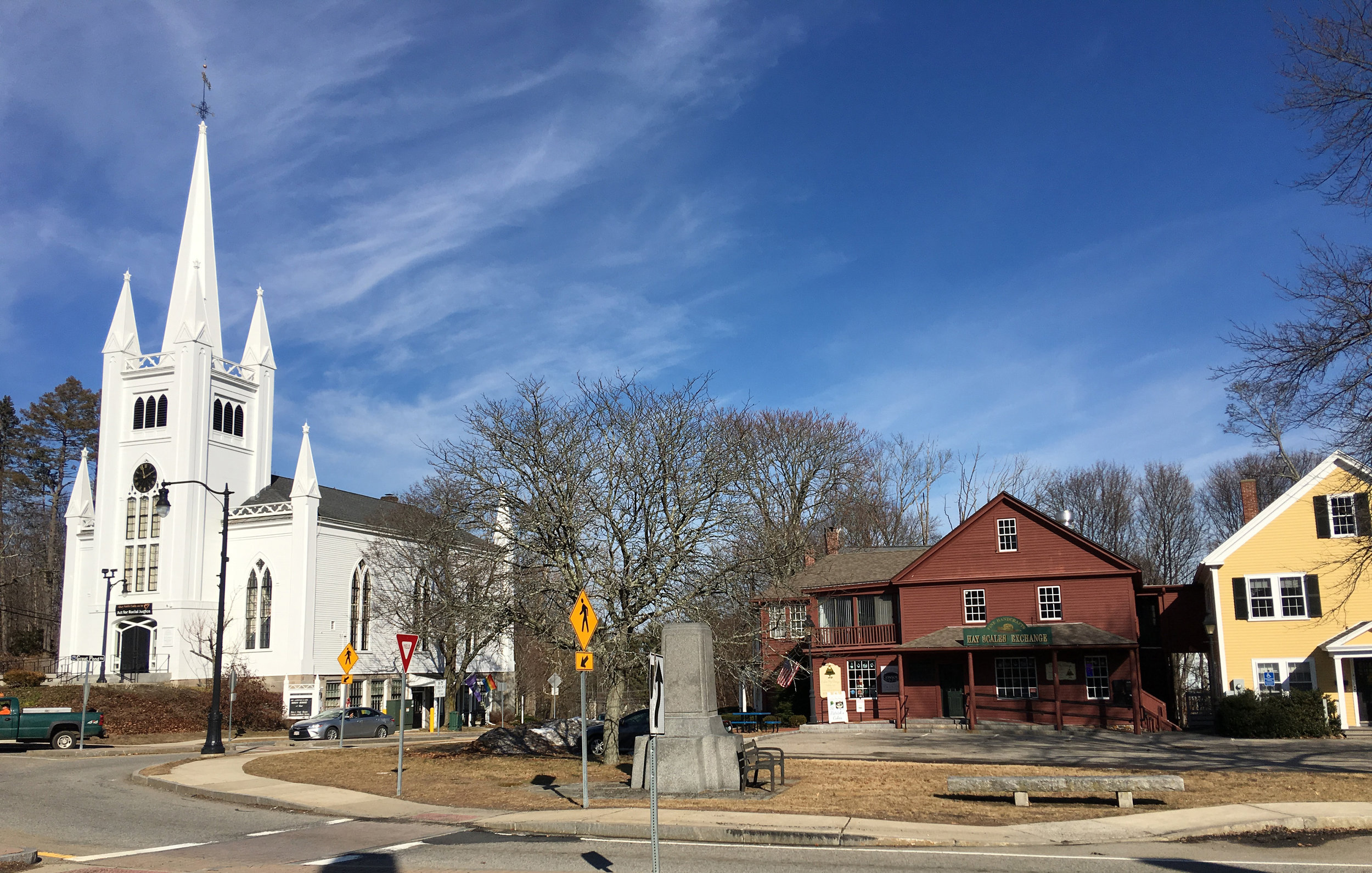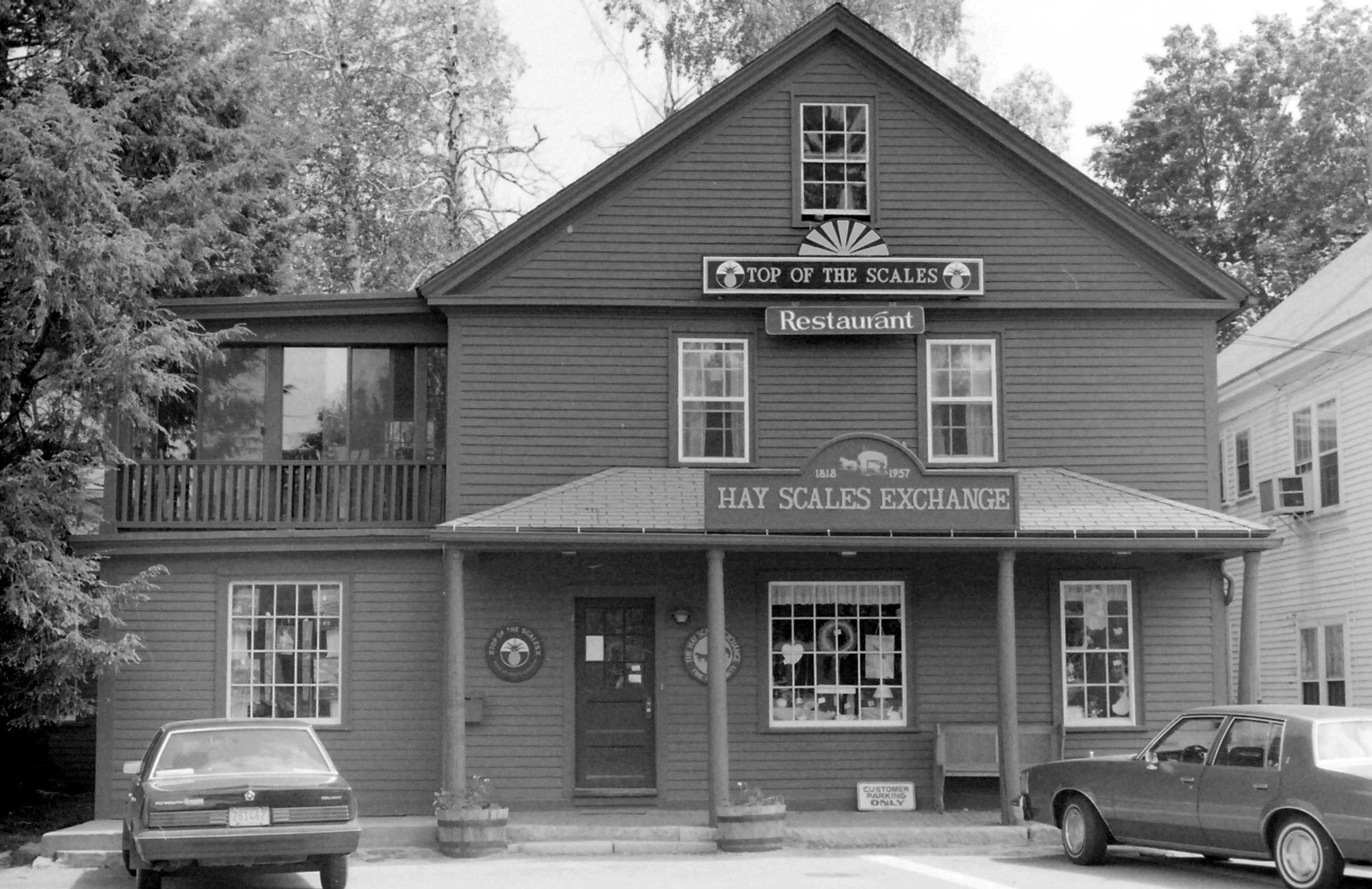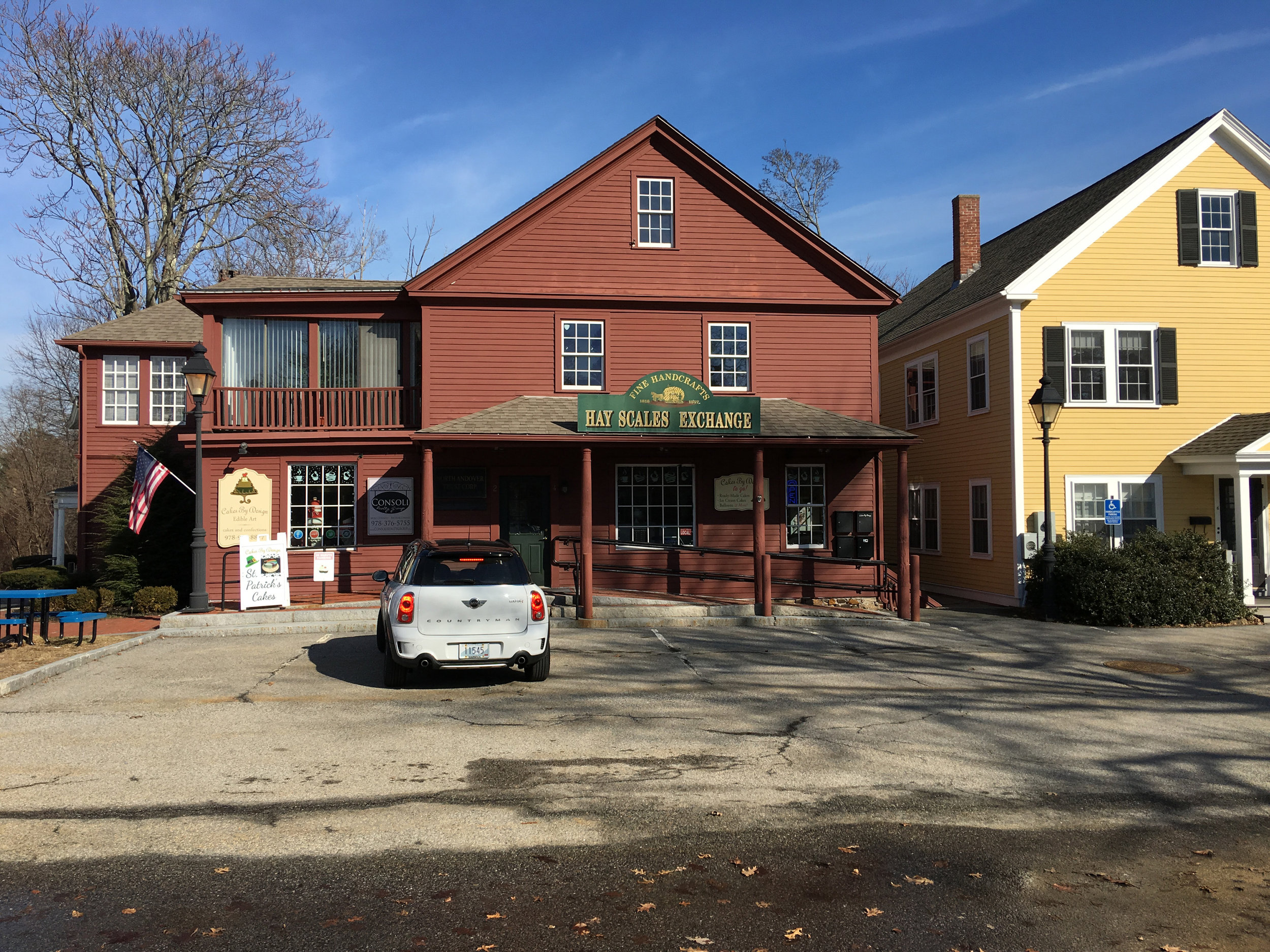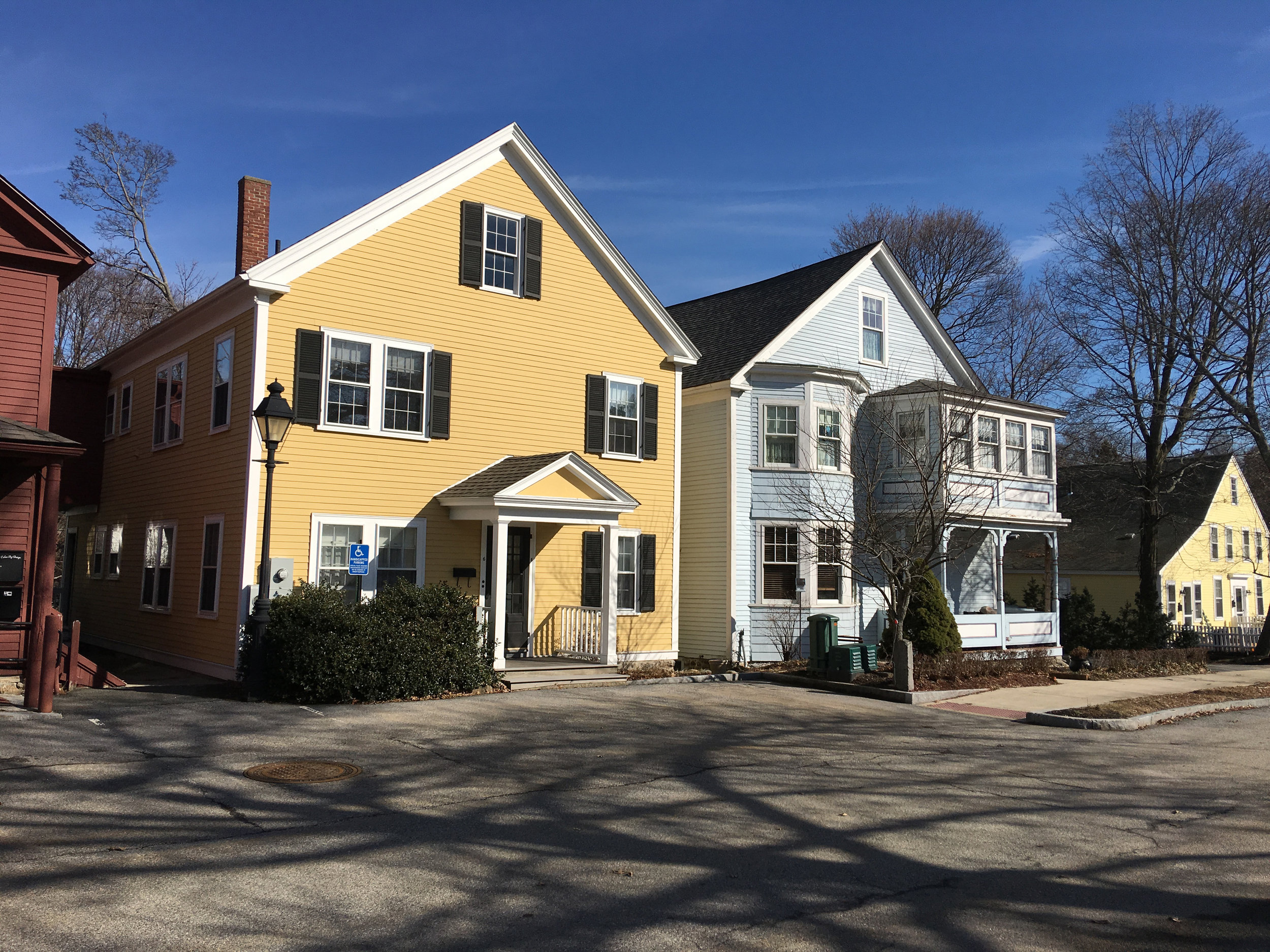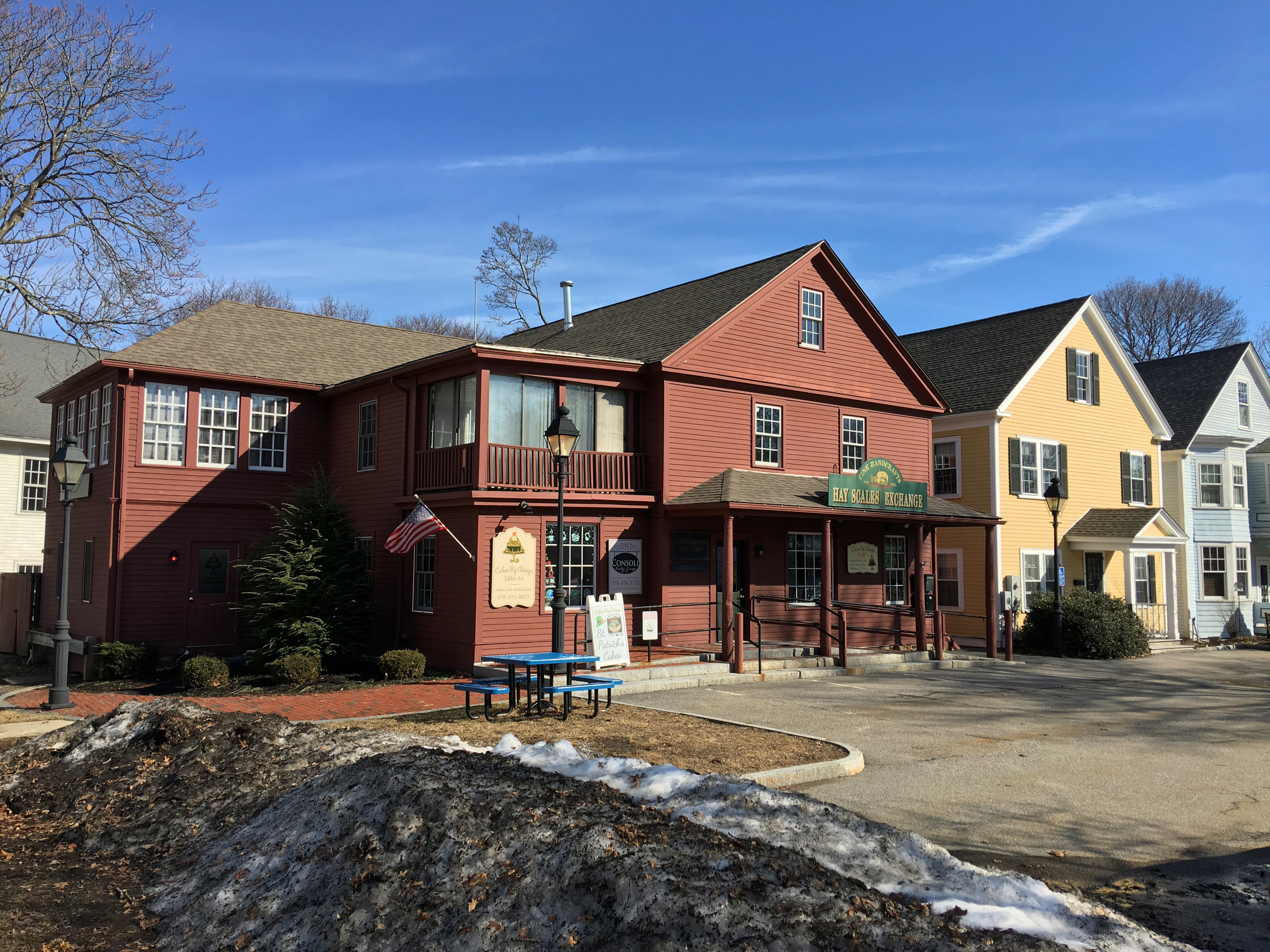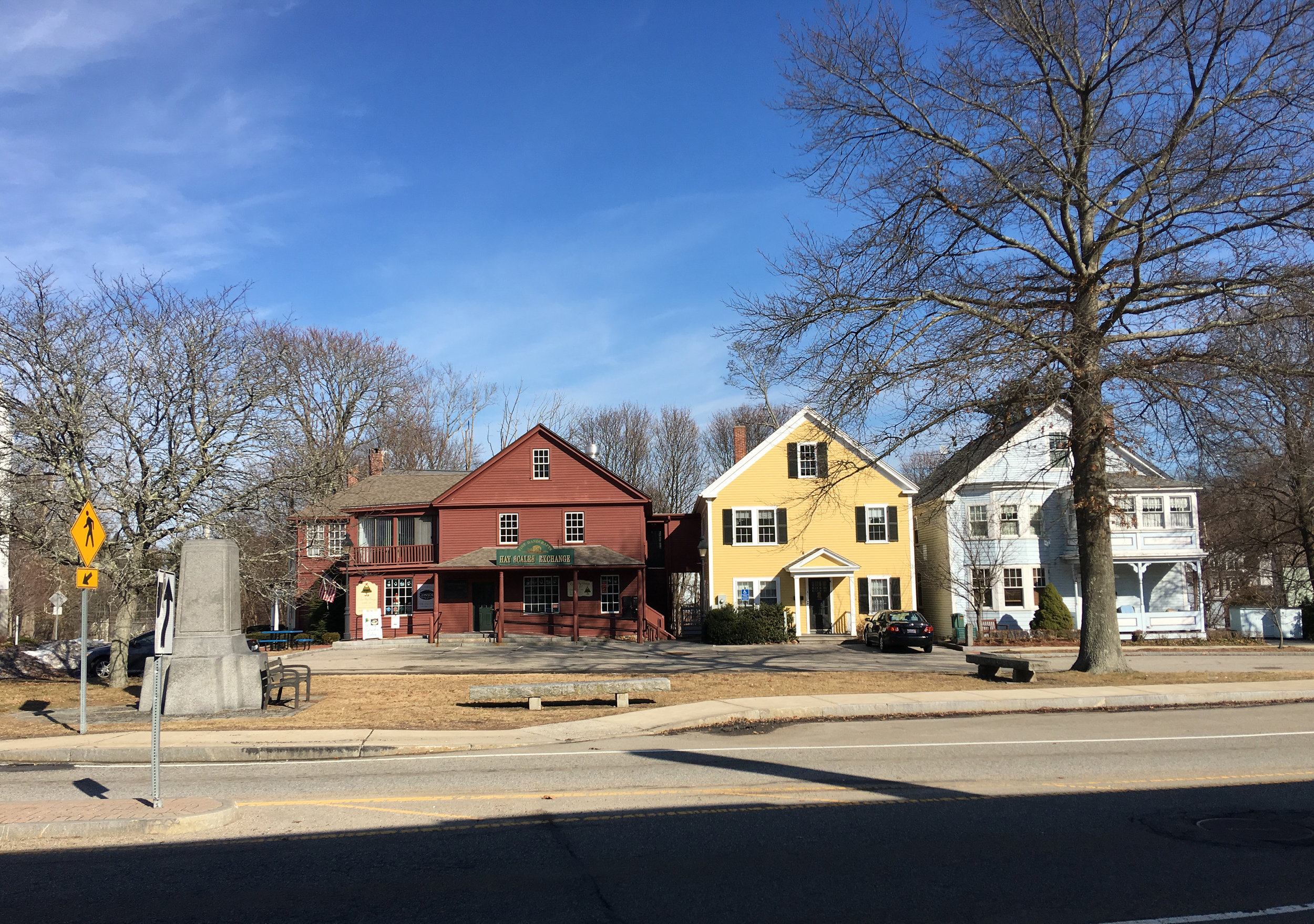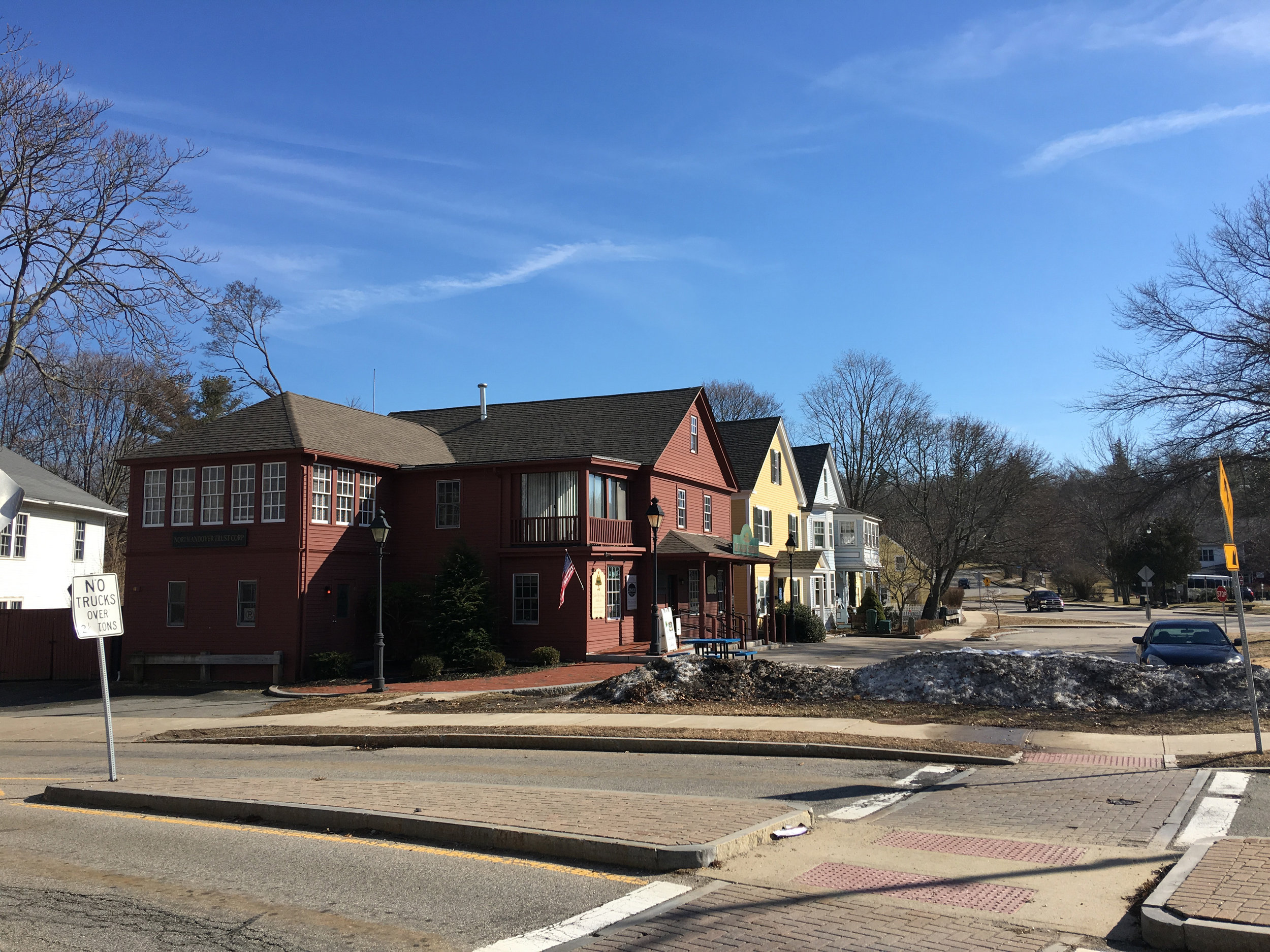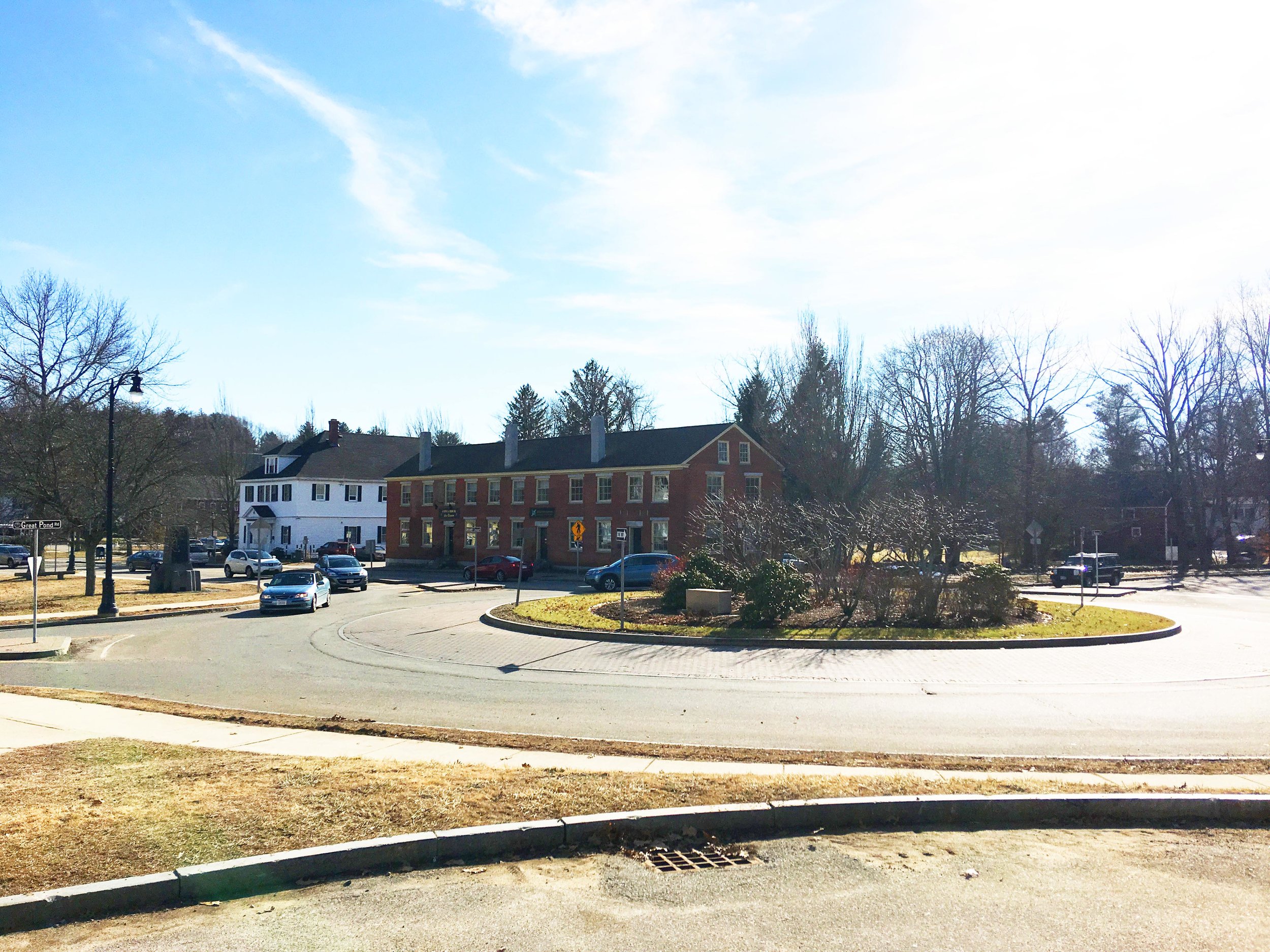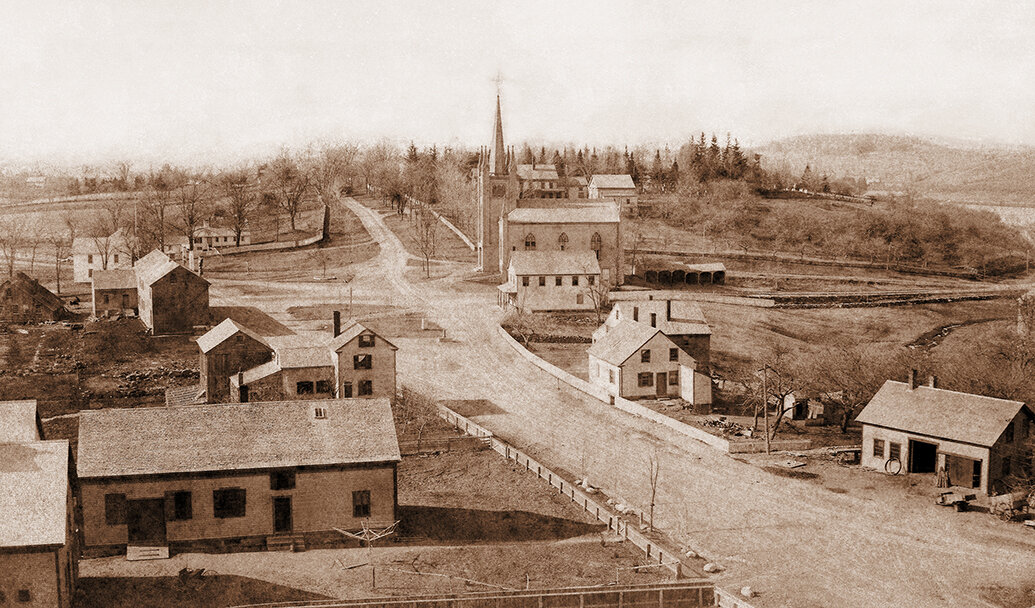
OLD CENTER
The Old Center (‘Centre Village’)
The original settlement of Andover in 1645 was laid out around what is now known as the First or Old Burying Ground. A town center grew up on the southern end of this original settlement. This neighborhood included the meetinghouse, the Second Burying Ground, and several of the parish's first stores. The area is known today as the Old Center.
old center early 1900s
Early in the 1800s the Centre Village developed as a rural trading center serving the needs of a widespread farming community. The village's growth was spurred by the emergence of a local industrial community, including Captain Nat Stevens's woolen mill (1813), and numerous shoe-manufacturing shops. The village began to decline after the Boston & Maine Railroad bypassed it in 1836 and the next generation of mills grew up further away in the area now known as Machine Shop Village. By the 1860s, Centre Village had lapsed back into its former role as a quiet rural center.
old center 1867
OLD CENTER 1880
Subsequently, the area surrounding Centre Village evolved from working farms to gentlemen’s estates. In 1885, these wealthy landowners organized the Village Improvement Association of North Andover (still active today). One of their goals was to extend the artfully created "natural" landscapes of the great private estates into the public and semi-public spaces of the town. Particular attention was paid to the Old Centre, where a rather commonplace 19th-century rural center has been reshaped in accordance with an idealized vision of how an early colonial New England village should have looked. The result of that reshaping is the spacious, verdant, and historically misleading "Old Center" of today.




